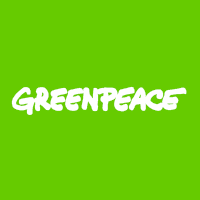Waikato Council Report Blame Intensive Dairy For Worsening Groundwater Nitrate But Fails To Warn Pregnant Women Of Risks

11 August: A Waikato Regional Council report presented today on Groundwater Nitrates in the region, shows extreme nitrate contamination in some areas and says three quarters of wells exceed levels linked to bowel cancer in a 2018 Danish Study but fails to warn of nitrate risks to pregnant women.
"This is a health justice issue," says Greenpeace Senior Campaigner Steve Abel, "access to safe and uncontaminated drinking water is a basic human right and currently that right is not being met for many people living outside of cities in this country."
Greenpeace says the figure that 22% of monitored wells exceeded legal limits of 11.3mg/L associated with Blue Baby Syndrome is "striking" and showed Waikato groundwater nitrate contamination to be potentially even worse than Canterbury in some areas.
"While the report acknowledges intensive dairy farming and other agricultural activity is to blame for high nitrates, it fails to mention synthetic nitrogen fertiliser despite Waikato being the second biggest user after Canterbury," says Greenpeace Senior Campaigner Steve Abel.
"The report also misleadingly describes nitrate levels under 5.65 mg/L as "low" when nitrate above 5 mg/L is very high by comparison with most of New Zealanders’ water supplies. It is at a level that the New Zealand College of Midwives suggest pregnant women avoid due to associations with reproductive impacts including preterm and underweight births," says Abel.
"Hundreds of household water supplies in Waikato could be exceeding that 5mg/L reproductive risk level and the Regional Council has an absolute duty to warn those communities of the potential health risks and do something about it," says Abel.
A recent case of potential underweight birth from nitrate in Waikato water supplies was reported by Stuff in June.
"Saying that 5 mg/L is "low" for nitrate is very misleading," says Abel. "Scientists suggest around 138,000 New Zealanders drink water 5mg and higher while 80% of the country drinks water with under 1 mg/L - under one can be correctly called low for nitrate."
In an advisory from May 2021, the College of Midwives say "Although the current MAV (Maximum Allowable Value) for nitrates in drinking water supplies is equivalent to 11.3mg/L, it is prudent to take a precautionary approach and consider the lower threshold of 5mg/L (or lower) as safer for pregnant women."
The new Waikato report, entitled "Groundwater Nitrates - potential hotspots, legacies and lag" was presented to the council’s Environment Performance Committee meeting today. It found that from 2016-2020, 22% of groundwater from wells in the State of the environment monitoring programme exceeded legally allowable levels of 11.3 mg/L at least once. The median concentrations from the same five-year period also exceeded guidelines at 11% of SOE wells and 5% of the community wells including school supplies. And noted that the Community network "shows more degrading trends (22.5%) than improving (6.25%)." The report says the areas with the highest concentrations are aquifers in Pukekohe and Pukekawa and parts of the Hauraki Plains and that, "The highest concentrations are associated with market gardening and dairy farming activities."
Abel says "Industrial dairy - and the synthetic nitrogen fertiliser that drives it - is responsible for worsening nitrate contamination of drinking water across New Zealand."
"Everyone has a right of access to safe drinking water, yet rural households are most at risk from having their water contaminated with nitrate that is both a risk for babies in utero and potentially carcinogenic."
Abel says that the National Environmental Standards-Drinking Water review currently underway, is "an opportunity to ensure safe drinking water for all", and is urging Minister Kiritapu Allen and the government to "address the main causes of water contamination in Aotearoa - synthetic nitrogen fertiliser and too many dairy cows."
"Both central Government and regional councils need to protect rural people on household bore supplies from nitrate by acknowledging the sheer volume of animal excreta - mainly dairy cow urine - leached into the ground as the primary source of nitrate contamination and cutting fertiliser and stocking rates to address it," said Abel.
Greenpeace is calling on Central and Regional Government to ensure healthy water for all communities by protecting drinking water sources through phasing out synthetic nitrogen fertiliser; lowering dairy cow stocking rates; and backing farmers to move to regenerative organic farming.


 Gordon Campbell: On bird flu, AUKUS entry fees and Cindy Lee
Gordon Campbell: On bird flu, AUKUS entry fees and Cindy Lee NZ Government: New Lab To Help Protect Key Pacific Tuna Fisheries
NZ Government: New Lab To Help Protect Key Pacific Tuna Fisheries Susan Botting - Local Democracy Reporter: Ruawai Leader Slams Kaipara Council In Battle Over $400k Property
Susan Botting - Local Democracy Reporter: Ruawai Leader Slams Kaipara Council In Battle Over $400k Property Te Pati Maori: Another ‘Stolen Generation’ Enabled By Court Ruling On Waitangi Tribunal Summons
Te Pati Maori: Another ‘Stolen Generation’ Enabled By Court Ruling On Waitangi Tribunal Summons Peace Action Wellington: Die In for Palestine Marks ANZAC day
Peace Action Wellington: Die In for Palestine Marks ANZAC day Labour Party: Penny Drops – But What About Seymour And Peters?
Labour Party: Penny Drops – But What About Seymour And Peters? Government: PM Announces Changes To Portfolios
Government: PM Announces Changes To Portfolios


